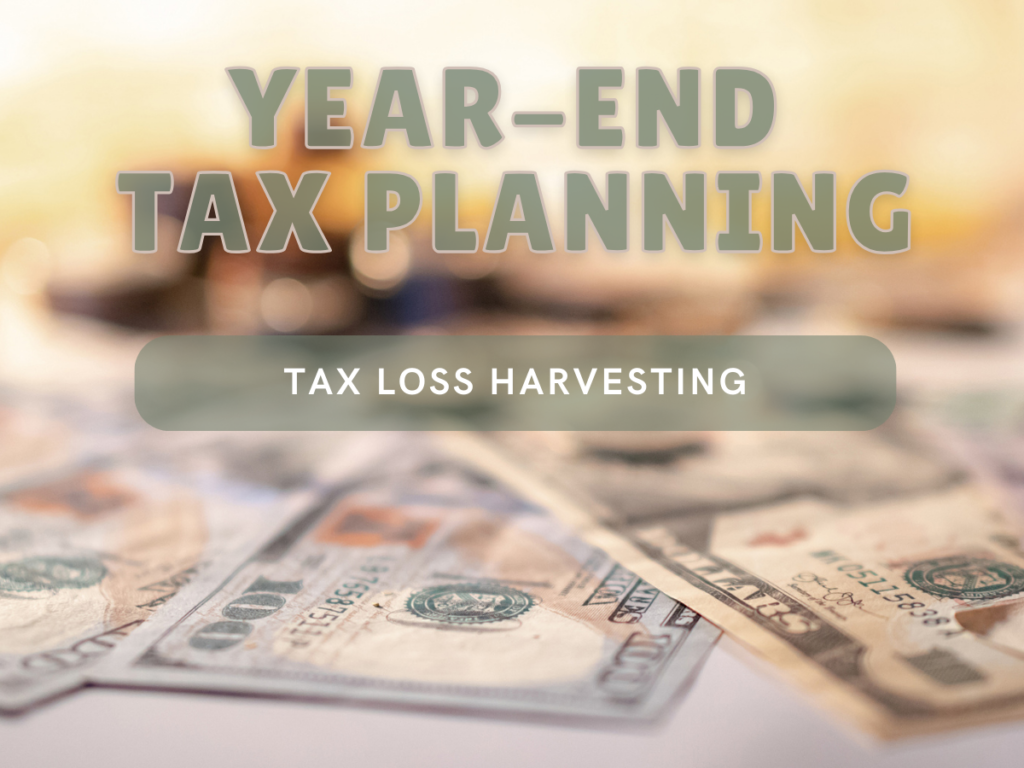As 2023 draws to a close, individual taxpayers can utilize a variety of tax planning strategies to help reduce taxable income. We will be posting a series of ideas to consider before year-end in order to minimize tax liability. See links under “Related Posts” for more tax-saving opportunities.
Tax-Loss Harvesting
Sometimes when a taxpayer invests in the stock market, the stocks fall, and the taxpayer loses money on his/her initial investment. Although this is not ideal for any taxpayer who puts money into the market expecting a gain on investment, losses from selling stocks that have gone south this year can provide a tax-savings opportunity known as tax-loss harvesting. This strategy is an effective way to take advantage of losses from the sale of stocks to help reduce taxable income for 2023 and for years to come.
What Is Tax-loss Harvesting?
Tax-loss harvesting is a tax strategy that involves selling nonprofitable investments at a loss in order to offset or reduce taxable capital gain income. If an individual taxpayer’s total capital losses exceed his/her total capital gains for the tax year, up to $3,000 ($1,500 if MFS) of that loss can be deducted on individual tax returns against ordinary income (generally subject to higher tax rates). If the taxpayer has total capital losses greater than $3,000, the remaining losses are carried forwarded indefinitely to offset against future capital gain income, or as a $3,000 reduction to ordinary income until the losses are exhausted.
Example
Tony has many investments in different stocks. Unfortunately for Tony, most of these stocks have not done well in 2023. As a result, he sold some of his shares. At the end of the year, Tony has a short-term capital gain (STCG) of $500, short-term capital loss (STCL) of $1,500, long-term capital gain (LTCG) of $1,000, and long-term capital loss (LTCL) of $6,000.
First, the capital gains and losses must be added together to determine the net results on a short-term and long-term basis. In the end, Tony has a net STCL of -$1,000 and a net LTCL of -$5,000, resulting in a total net loss of -$6,000 from the sale of investments. If Tony has no other capital gains or losses to report, then he can take $3,000 of that loss and use it to reduce his adjusted gross income. The remaining $3,000 loss will then be carried forward indefinitely until it offsets capital gain in the future or can be used as a reduction to ordinary income (subject to the $3,000 per year limitation).
Limitations & Considerations
This tax-savings method can be utilized by taxpayers with investments of stocks to reduce tax liability from large capital gains, in the current tax year or in the future with the carryforward. However, taxpayers should be aware of some limitations of tax-loss harvesting if they are considering using this strategy.
First, this strategy can only be applied to offset taxable investment gains (not gains taxed at ordinary income tax rates). Tax-harvesting is generally not beneficial to tax-deferred accounts, such as 401(k) or IRA accounts, because taxpayers do not recognize income until funds are withdrawn from the accounts. Another important consideration of tax-loss harvesting is the timing of the sale of the investment. The date the stock is sold determines the tax year in which the loss is recognized. Taxpayers should be mindful of this timing when working with these strategies at yearend to ensure that the loss occurs in the intended tax year. Finally, it is important to remember that losses must first be used against similar gains (i.e. short-term loss against short-term gain) before they can be used against the other category.
Final Thoughts
Although selling stocks at a loss is not what anyone expects when making an investment, tax-loss harvesting is an effective way to reduce one’s tax liability for the current tax year as well as potentially multiple years in the future. If you need assistance with tax-harvesting or your overall tax-planning strategy, please contact the GYF Tax Services Group at 412-338-9300.
Related Posts:
Year-End Tax Planning Strategies for Individuals – Charitable Contributions
Year-End Tax Planning Strategies for Individuals – Residential Energy Credits
Year-End Tax Planning Strategies for Individuals – Bunching of Itemized Deductions
Year-End Tax Planning Strategies for Individuals – Pre-tax and Self-employed Deductions
Year-End Tax Planning Strategies for Individuals – Securities








